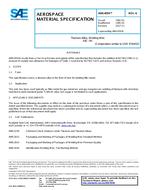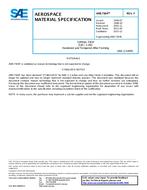Click here to purchase
Electrolytically deposited chrome plate is the current standard surface treatment for landing gear component interface surfaces that require good wear resistance and corrosion protection. Chrome plated components are typically plagued by a slight debit in fatigue performance, detrimental mud cracking surface pattern, susceptibility to scoring, wear, and seal leakage. In addition, recent changes in environmental compliance standards place further restrictions on the use of electrolytically deposited chromium. Some commercial applications have already eliminated the use of chrome plate on current and future products. As a result, a substitute for electrolytically deposited chrome plate has been sought for several years.
High Velocity Oxygenated Fuel (HVOF) thermal spray coatings have been developed to the point where they are being implemented as an alternative to hard chrome plate on high strength low alloy steels for external surfaces on landing gear applications. Some of the characteristics of HVOF coatings, such as fatigue and wear resistance are superior to hard chrome plate. Yet, performance characteristics, such as adhesion under very high strains, are clearly different. This document is intended to outline and describe the design and usage guidelines for HVOF tungsten carbide coatings to assure adequate quality and performance of the landing gear equipment. This document is not intended to act as a detailed process specification for applying HVOF coatings. Also, the recommendations in this document do not necessarily apply to certain proprietary spraying systems (i.e., D-Gun\sT).
The information in this document pertains to HVOF tungsten carbide based coatings applied to high strength steel alloys only, and is not necessarily applicable to other substrates.
Product Details
- Published:
- 10/25/2013
- File Size:
- 1 file , 97 KB


